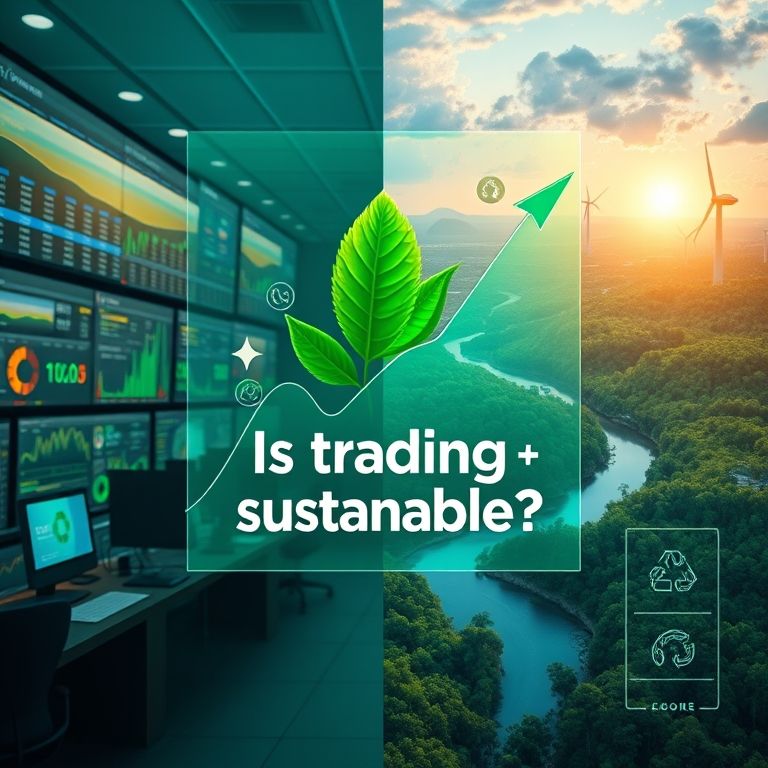is trading sustainable
Is Trading Sustainable? A Practical Look at Web3 Finance
Introduction
When I opened my trading dashboard last week, I wasn’t just chasing profits—I was thinking about long-term value, responsibility, and the energy my trades consume. Sustainable trading isn’t a buzzword; it’s a mindset that blends risk discipline, transparent data, and technology that doesn’t burn through capital or resources. As Web3 tools mature, the question isn’t only “Can I win?” but “Can I trade in a way that’s scalable, secure, and respectful of the system I rely on?”

Is Trading Sustainable? The Core Idea
Trading sustainably means balancing steady risk management with transparent, verifiable processes. It’s about choosing assets and platforms that align with long-term value creation, using data you can trust, and applying technology that enhances safety without inflating risk. In practice, that translates to diversified exposure, prudent leverage, and a clear governance framework for your strategy.
Web3 as a Tool, Not a Cure
- Decentralization and transparency: On-chain data and verifiable trade histories help you audit performance and verify fees. You can test ideas in a public, tamper-evident way, which lowers the “hidden costs” of information asymmetry.
- Composability and cross-asset access: You can assemble liquidity from different pools and execute multi-asset trades more efficiently, whether you’re playing forex, stocks, crypto, indices, options, or commodities.
- Reality check on costs: Gas, slippage, and oracle reliability matter. Sustainable trading means designing strategies that are robust to network conditions and fee environments.
Asset Classes and Sustainable Practices
- Forex: Widest liquidity, but move with caution. Rely on trustworthy price feeds and consider longer-term horizons to dampen erratic intraday moves. Use strict stop-loss rules and position sizing to protect capital when volatility spikes.
- Stocks: Tokenized shares and on-chain venues can offer transparency, but regulatory and settlement considerations exist. Favor platforms with clear custody and risk controls.
- Crypto: High upside, but also high risk. Favor audited contracts, clear liquidity sources, and risk-managed exposure to volatility. Diversify across layers and avoid overconcentration in a single protocol.
- Indices: Broad exposure with smoother risk profiles. Use diversified baskets to reduce single-name risk.
- Options: Leverage with defined risk, but complexity is real. Simple hedges and disciplined scaling help you avoid blown losses from near-term spikes.
- Commodities: Real-world underpinnings, often tied to macro cycles. Trade via instruments with clear delivery and storage costs to avoid phantom risk.
Reliability, Risk, and Leverage Strategies
- Practical leverage: If you’re trading across these assets, keep leverage conservative for most plays and reserve it for well-tested setups with solid backtesting. Align leverage with your risk budget, not with your latest win—the goal is consistency, not fireworks.
- Risk controls: Define a total drawdown cap per month and per asset class. Use hard stops, trailing stops, and diversified exposure to avoid correlated shocks.
- Backtesting and live testing: Build a paper-trade phase on real data before committing real capital. Look for strategy robustness across varying market regimes.
DeFi Realities: Decentralization’s Gains and Growing Pains
- Gains: Permissionless access, lower counterparty risk when you manage your own keys, and the ability to verify performance transparently. Smart contracts can automate recurring tasks, improving efficiency.
- Pains: Smart contract bugs, liquidity fragmentation, and evolving regulatory frameworks. Security remains a dynamic concern; continuous auditing and diversified risk controls are essential.
- Living with risk: In practice, many traders keep a hybrid approach—core high-credibility positions in regulated venues and experimental ideas in trusted DeFi ecosystems with careful capital allocation.
Future Trends: Smart Contracts, AI, and a Sustainable Path Forward
- Smarter contracts, smarter trades: Smart contract automation will enable predictable execution, cost controls, and complex strategies that can scale without human fatigue. Expect better risk management tooling embedded directly into the protocol.
- AI-driven signals, human oversight: AI can surface patterns, optimize portfolio construction, and automate routine monitoring. The key is to keep a human-in-the-loop for risk judgments and guardrails, not to hand over control completely.
- Sustainable infrastructure: Layer-2 solutions and energy-efficient consensus models (like proof-of-stake) reduce waste and fees, making on-chain trading more scalable without sacrificing security.
- Regulation and resilience: A mature ecosystem will demand stronger custody, clearer disclosures, and interoperable standards. Traders who adapt to these standards will weather market shifts more gracefully.
Naming a Simple, Real-World Guideline
- Slogan: Trading sustainably isn’t about avoiding risk—its about managing risk with clarity, data, and a forward-looking tech stack.
- Takeaway: Build your strategy around diversified exposure, transparent costs, verified data, and prudent leverage. When you combine reliable tech with disciplined behavior, sustainable trading becomes a practical everyday discipline, not a lofty ideal.
Conclusion
In today’s landscape, sustainable trading means more than cool dashboards or flashy setups. It’s about choosing assets and venues that align with long-term value, using technology that increases reliability and safety, and staying disciplined in risk management as markets evolve. With Web3 maturing—through better smart contracts, AI-driven insights, and greener infrastructure—traders can pursue multi-asset strategies (forex, stocks, crypto, indices, options, commodities) that are not only potentially profitable but also more transparent, accountable, and enduring. Embrace the shift: trade with purpose, harness smart tools, and keep sustainability as your compass.
YOU MAY ALSO LIKE